It's not specifically rectangles + right triangles, but a good research point for looking into tesselating polygons is Voronoi Diagrams and Delaunay Triangulations and here and here.
In fact, if "just right triangles" is good enough, these are guaranteed to triangulate for you, and you can always split any triangle into two right triangles, if you really need those. Or you can chop off "tips" of triangles to make more right triangles and some rectangles out of the right-triangles.
You can also try ear-clipping, either by sweeping radially, if you know you have fairly regular polygons, or by "clipping the biggest convex chunk" off. Then, split each remaining triangle into two to create right triangles.

(source: eruciform.com)
You could try to make less breaks by sweeping one way and then the other to make a trapezoid and split it differently, but you then have to do a check to make sure that your sweep-line hasn't crossed another line someplace. You can always ear-clip, even with something practically fractal.
However, this sometimes creates very slim triangles. You can perform heuristics, like "take the biggest", instead of clipping continuously along the edge, but that takes more time, approaching O(n^2). Delaunay/Vornoi will do it more quickly in most cases, with less slim triangles.

